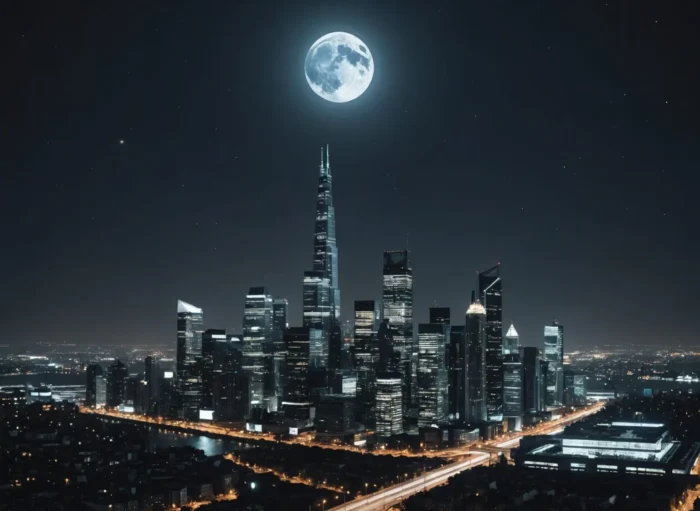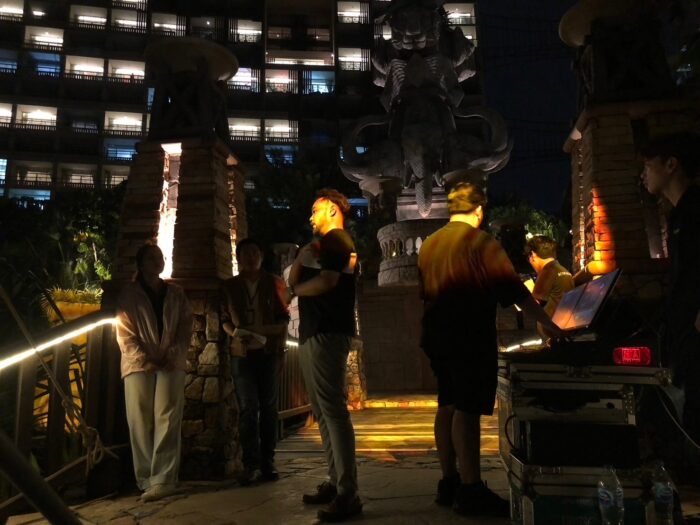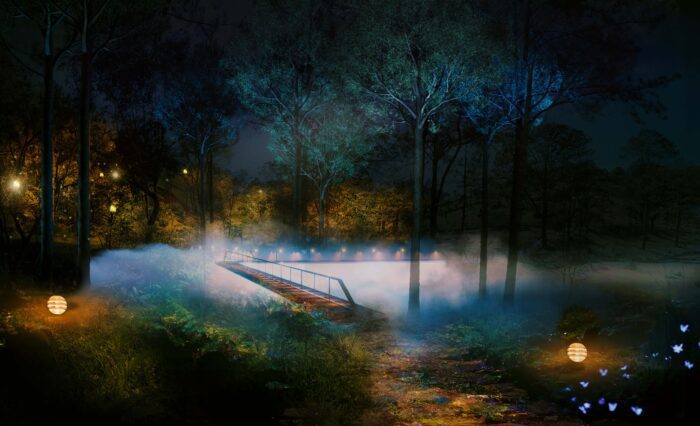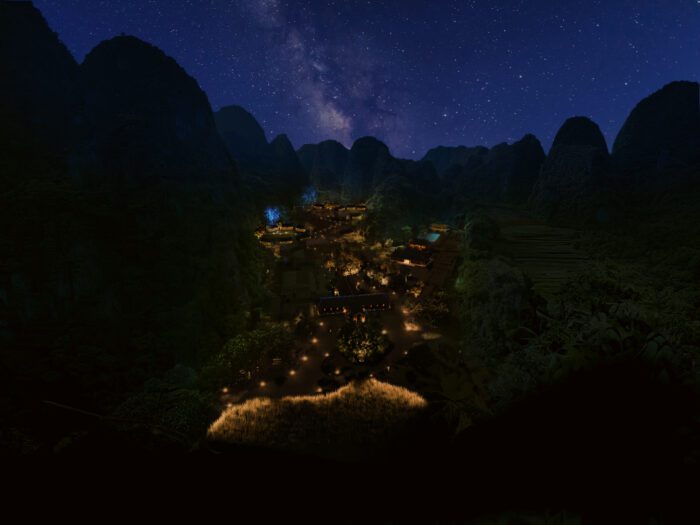Our Director Cyril Lamy had the privilege of participating in a discussion panel addressing light pollution issues in Asia along...
Read MoreScenoLight Atelier – Architectural & Experience Lighting
DRAMATIC LIGHT, FROM ARTS TO ARCHITECTURAL APPLICATIONS
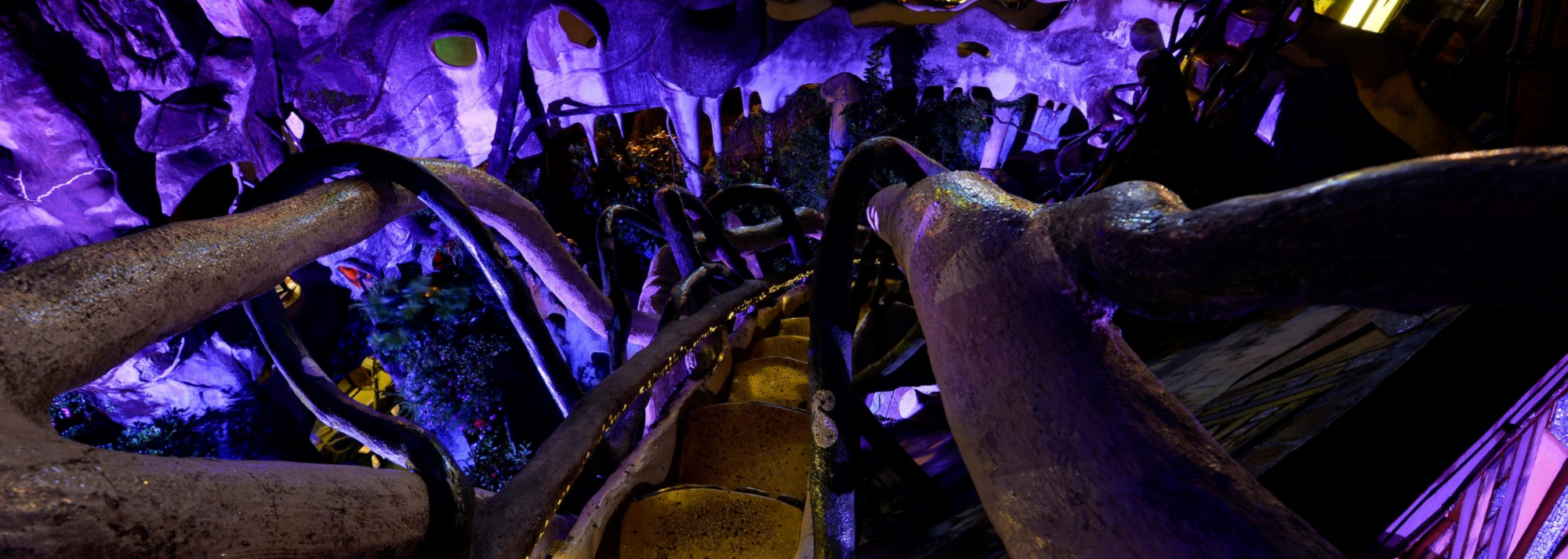
Light always tells us unconsciously something, as an abstract language, with various cultural and historical varieties of interpretations. This essential language of the sun and fire has been manipulated from the origin of humanity through the arts of painting and sculpture, and deeply explored since the advent of artificial lighting by photography, cinema and performance arts. Artists know how to convey the dramatic power of the light to tell their story, to guide the interpretation of a scene, and to increase the meaning and emotions.
Prehistoric paintings used the shaking of firelight to simulate the animals’ movements, playing with shadows and overlapping images.
La Grotte Chauvet, about 30 000 years old, France
The term dramatic lighting to convey a meaning, mood, and as well as atmosphere, is an artistic affair when it comes to architectural or landscape lighting design.

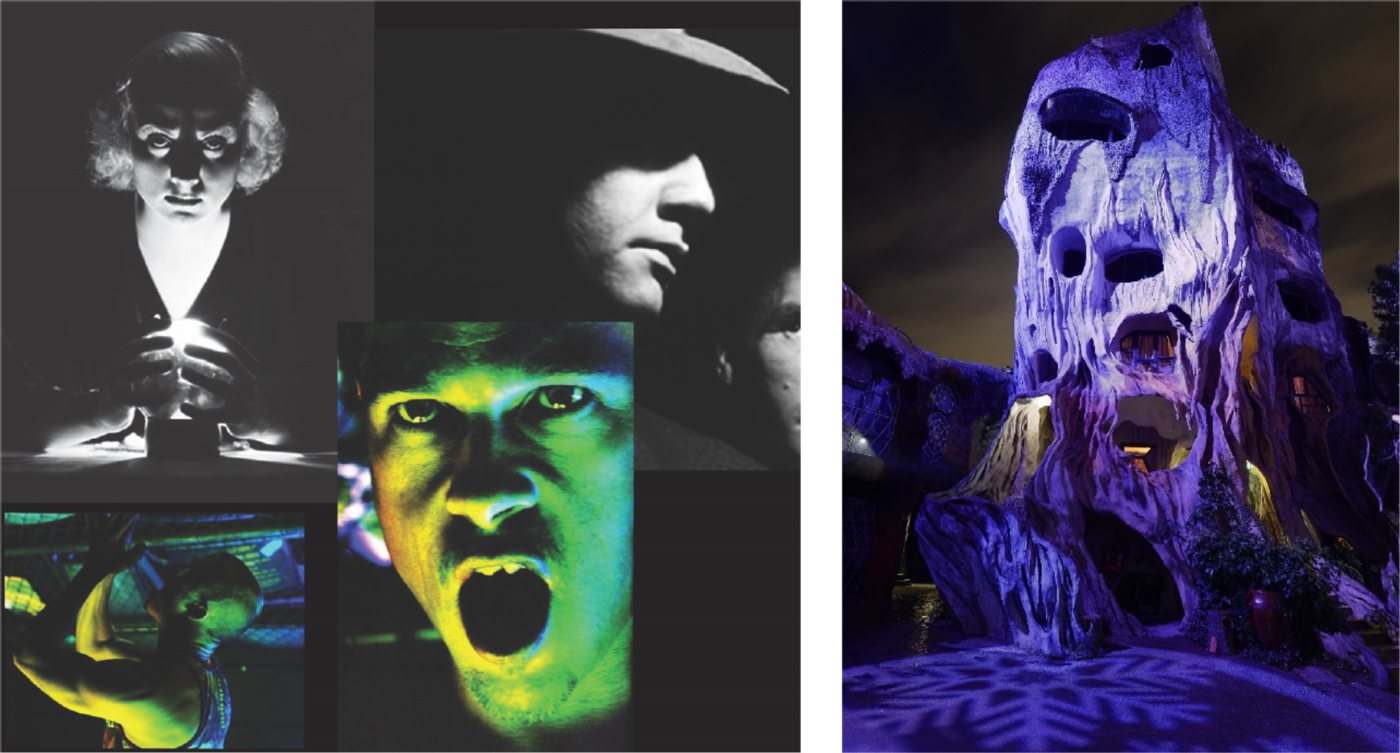
Contre – Plongee lighting in movie scenes – Crazy House project by SLA designers, 2018.
At SLA designers we always start designing our projects from this point of view. As we believe in the power of creating emotions with light and also with architecture and landscape.
Dramatic lighting applied for architectural and landscape projects. This project has been thoroughly elaborated from photography and cinema references, following the architect’s surreal world. The techniques and equipment are also quite similar to the ones applied for a photo shoot or movie scene, by staging the position of each light, carefully choosing the color palette, and light direction.
Contrast and eye direction
Painting is one of the oldest mediums which uses dramatic lighting. Light and Shadow – Good and evil, chaos and control, controlling these two elements is one the most important tasks to achieve dramatic lighting. It is a so-called shading technique, to create volume and space, volume can be accentuated using back and side lighting, by highlighting prominent features, and leaving the rest in shadow.
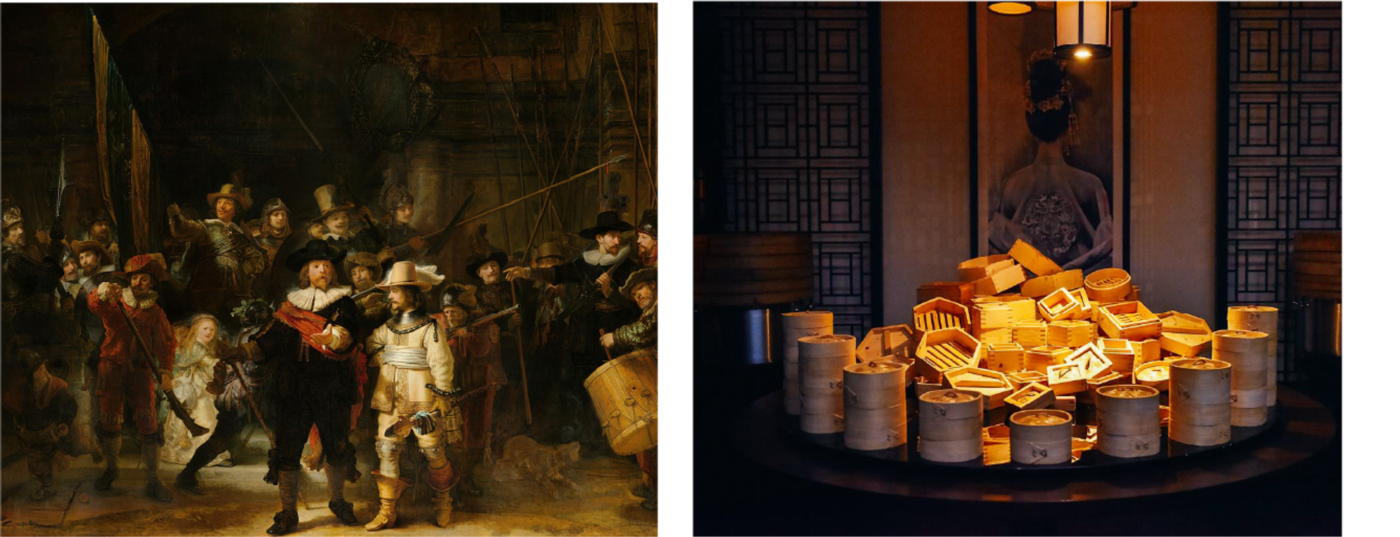
Night Watch, Rembrandt – Lai restaurant, SLA designers, 2019
Rembrandt is a legendary painter from the Netherlands who is famous for creating extraordinary lighting techniques at that time in his art, like his masterpiece: A Night Watch. By using the dramatic lighting, the keystone, the part of the painting that holds everything in place are the dual figures of the captain and his lieutenant in the middle and the rest of the portrait moves away from them diagonally which makes them extremely highlighted. The dramatic lighting can single out two key figures and create an optical phenomenon called “Depth of field”. Ultimately, Rembrandt used this lighting method to point out to the viewer what detail to look at.
Enhancing mood and atmosphere
The scene from Suspiria (1977) has been fairly simply lit with one big heavily diffuse backlight and a piece of poly at the right to bounce the light back in – That it’s! Simple. But the cool touch is from the lighting on the eyes of the protagonist which holds the reflection from a 45-degree teleprompter, so no post, all done in camera. In contrast with the scenes from Suspiria (1977), the dramatic lighting sources are very complex, and the use of Technicolor is in harmony to create a surreal world that the protagonist is placed. But in total, however the simplicity and complexity, lit effects were used to enhance the mood and atmosphere.

Suspiria (1977) – Crazy House project by SLA Designers 2018
Color and emotion are bonding closely with each other, it is associated with the narrating and immersive experiences of the scene. To give the clue to the viewer or quickly or completely, getting them emotion the visitor to help them understand the story more involved with the scene or architecture. By choosing a color palette according to the theory of color and emotion, or using the gobo, the glowing light technique, we can reveal the characteristic area of the lighting design.
Spectacular and Storytelling
Lighting is a powerful material to produce spectacular effects; and as this ultimate encounter between show and architecture, lighting installation applied to the façade or interior turns the architecture for the visitors into an audience. The dramatic aspects of light are emphasized by a scenario, often completed by sound and music and other media, to tell a story, to tell its history, to immerse viewers into the creator’s perspective. This is the art of using the right angle, the art of fine-tuning intensity and colors, balancing between light and shadow, revealing characteristics, bringing movement to the light, adjusting the composition, enhancing the authenticity of the architecture, making uniqueness, and expanding the boundaries of the space. The art of the creative lighting designer combined with a scenography vision.

Plaisir D’Hiver – Grand Place (ACTLD) and Light Moves (ACTLD)
- Writer : Hao – Motion Designer
- Credit : Crazy House by SLA, ACTLD
Recent articles
NIGHTSCAPE | THEMATIC APPROACH
https://youtu.be/TpktLUKycwM As a lighting designer with a background in architecture and scenography, our method of lighting design has always incorporated...
Read MoreEXPERIENCE LIGHTING TESTING
😍 We love this step in our design process when it comes to test our lighting effects on site !...
Read MoreOUTDOOR ART LIGHTING EXPERIENCE
https://youtu.be/zT4kbQmD0-c 🌟 Exciting news! Delve into the enchanting world of outdoor natural light experiences with us as we unveil the...
Read MoreNIGHTSCAPE DESIGN | CASE STUDY
https://youtu.be/XaQC0DQ59Vk Our Nightscape Design Approach | Case Study in Vietnam Embarking on a nightscape lighting design involves a delicate balance...
Read MoreNEW MEMBERSHIP | LUCI ASSOCIATION
New LUCI associated member 2024: Welcome to ScenoLight! Based in Bangkok and Ho Chi Minh, ScenoLight Atelier specializes in transformative...
Read MoreLight always tells us unconsciously something, as an abstract language, with various cultural and historical varieties of interpretations. This essential language of the sun and fire has been manipulated from the origin of humanity through the arts of painting and sculpture, and deeply explored since the advent of artificial lighting by photography, cinema and performance arts. Artists know how to convey the dramatic power of the light to tell their story, to guide the interpretation of a scene, and to increase the meaning and emotions.

La Grotte Chauvet, about 30 000 years old, France
The term dramatic lighting to convey a meaning, mood, and as well as atmosphere, is an artistic affair when it comes to architectural or landscape lighting design.
At SLA designers we always start designing our projects from this point of view. As we believe in the power of creating emotions with light and also with architecture and landscape.
Dramatic lighting applied for architectural and landscape projects. This project has been thoroughly elaborated from photography and cinema references, following the architect’s surreal world. The techniques and equipment are also quite similar to the ones applied for a photo shoot or movie scene, by staging the position of each light, carefully choosing the color palette, and light direction.

Contrast and eye direction
Painting is one of the oldest mediums which uses dramatic lighting. Light and Shadow – Good and evil, chaos and control, controlling these two elements is one the most important tasks to achieve dramatic lighting. It is a so-called shading technique, to create volume and space, volume can be accentuated using back and side lighting, by highlighting prominent features, and leaving the rest in shadow.

Rembrandt is a legendary painter from the Netherlands who is famous for creating extraordinary lighting techniques at that time in his art, like his masterpiece: A Night Watch. By using the dramatic lighting, the keystone, the part of the painting that holds everything in place are the dual figures of the captain and his lieutenant in the middle and the rest of the portrait moves away from them diagonally which makes them extremely highlighted. The dramatic lighting can single out two key figures and create an optical phenomenon called “Depth of field”. Ultimately, Rembrandt used this lighting method to point out to the viewer what detail to look at.
Enhancing mood and atmosphere
The scene from Suspiria (1977) has been fairly simply lit with one big heavily diffuse backlight and a piece of poly at the right to bounce the light back in – That it’s! Simple. But the cool touch is from the lighting on the eyes of the protagonist which holds the reflection from a 45-degree teleprompter, so no post, all done in camera. In contrast with the scenes from Suspiria (1977), the dramatic lighting sources are very complex, and the use of Technicolor is in harmony to create a surreal world that the protagonist is placed. But in total, however the simplicity and complexity, lit effects were used to enhance the mood and atmosphere.

Color and emotion are bonding closely with each other, it is associated with the narrating and immersive experiences of the scene. To give the clue to the viewer or quickly or completely, getting them emotion the visitor to help them understand the story more involved with the scene or architecture. By choosing a color palette according to the theory of color and emotion, or using the gobo, the glowing light technique, we can reveal the characteristic area of the lighting design.
Spectacular and Storytelling
Lighting is a powerful material to produce spectacular effects; and as this ultimate encounter between show and architecture, lighting installation applied to the façade or interior turns the architecture for the visitors into an audience. The dramatic aspects of light are emphasized by a scenario, often completed by sound and music and other media, to tell a story, to tell its history, to immerse viewers into the creator’s perspective. This is the art of using the right angle, the art of fine-tuning intensity and colors, balancing between light and shadow, revealing characteristics, bringing movement to the light, adjusting the composition, enhancing the authenticity of the architecture, making uniqueness, and expanding the boundaries of the space. The art of the creative lighting designer combined with a scenography vision.

Writer: Hao – Motion Designer
Credit: Crazy House by SLA, ACTLD

